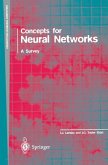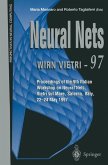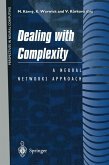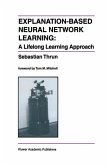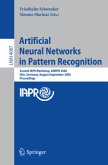This book is the product of a 15-month intensive investigation of the European artificial network scene, together with a view of the broader framework of the subject in a world context. It could not have been completed in such a remarkably short time, and so effectively, without the dedicated efforts of Louise Turner, the DEANNA secretary, and Geoff Chappell, the DEANNA researcher, at the Centre for Neural Networks, King's College, London. I would like to take this opportunity to thank them for their heroic efforts. I would also like to thank my colleagues in the Centre and in the Mathematics Department, especially Mark Plumbley, Michael Reiss and Trevor Clarkson for all their help and encouragement, Denise Gorse of University College London, for allowing use of her lecture notes as a basis for the tutorial and the DEANNA partners for the part they played. Finally I would like to acknowledge the European Community support, and especially Mike Coyle for his trenchant comments during the carrying out of the work. March 1993 J. G. Taylor CONTENTS PART I: SETTING THE SCENE Chapter 1: DEANNA. . . . . . . . . . . . . . . . . . . . . . . . . . . . . . . . . . . . . . . . . . . . . . . . . . . . . . . . . . . . . . . . . . . . . . 3 1 . 1 Introduction. . . . . . . . . . . . . . . . . . . . . . . . . . . . . . . . . . . . . . . . . . . . . . . . . . . . . . . . . . . . . . . . . . . . . . . . . . . . 3 . 2 The Geographical Dimension. . . . . . . . . . . . . . . . . . . . . . . . . . . . . . . . . . . . . . . . . . . . . . . . . . 5 1 1. 3 The Industrial Dimension. . . . . . . . . . . . . . . . . . . . . . . . . . . . . . . . . . . . . . . . . . . . . . . . . . . . . . . . . 6 1 . 4 The Plan for Neural Networks . . . . . . . . . . . . . . . . . . . . . . . . . . . . . . . . . . .. . . . . . . . . . . . . . 6 Chapter 2: Neural Net Demonstrators. . . . . . . . . . . . . . . . . . . . . . . . . . . . . . . . . . . . . . . . . . 9 2. 1 The Status of Neural Networks . .. . . . . . . . . . . . . . . . . . . . . . . . . . . . . . . . . . . . . . . . . . . . . 9 2. 2 Reasons for the Employment of Neural Networks . . . . . . . . . . . . . . . . . . . 9 2. 3 Neural Network Models . . . . . . . . . . . . . . . . . . . . . . . . . . . . . . . . . . . . . . . . . . . . . . . . . . . . . . . . . . 10 2. 4 Areas of Application . . . . . . . . . . . . . . . . . . . . . . . . . . . . . . . . . . . . . . . . . . . . . . . . . . . . . . . . . . . . . . . . 11 2. 5 Typical Applications . . . . . . . . . . . . . . . . . . . . . . . . . . . . . . . . . . . . . . . . . . . . . . . . . . . . . . . . . . . . . . . .


